Olympic 5000m and 10,000m medallist and Amazfit ambassador explains why smart wearables give him invaluable training feedback.
In the quest to become one of the world’s best distance runners, Grant Fisher plans his training by using a combination of gut instinct and technology. A top runner since his teenage years, the 28-year-old has developed a great feel for what his body is capable of. He doesn’t rely entirely on old-school intuition, though. “My training is very data-driven,” he says.
So far, the approach is working. Last year, he won bronze medals in the 5000m and 10,000m at the Paris Olympics before setting world indoor records at 3000m with 7:22.91 and 5000m with 12:44.09. In addition, he holds the American 10,000m record with 26:33.84 and has run a swift 3:48.29 for the mile.
To reach this level has taken years of dedicated, patient and often painful training. When he first began to show promise as a teenage runner, GPS watches were not quite as commonplace as they are today. But in recent years, he’s embraced the use of smart wearables and uses the Amazfit Balance 2 and Helio Armband, in addition to the Helio Ring, while he sleeps, in order to measure how his body is handling his daily training load.
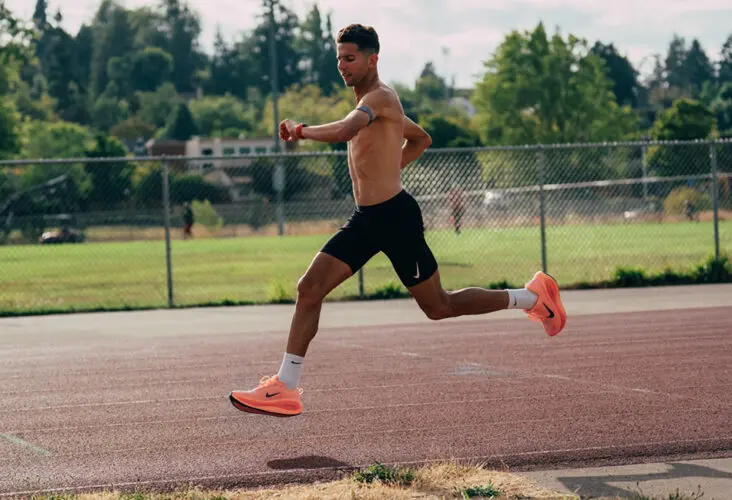
“Data collection is good as a runner,” he says. “You really have to use it to make it be worthwhile. Otherwise, you're just kind of looking at numbers, for me at least.
“The first metric you get as a runner is time. Or ‘how far did I run?’ The second metric you get is distance. And from that you can figure out pace. So those are the first things that people look at.
“Then I think the next kind of metric that people start looking at is heart rate. And then I'm all the way to lactate. I wouldn't recommend a casual runner pricks their finger to check their lactate, but at my level it's important."
We’re chatting at his team hotel at the World Championships in Tokyo. He has slotted our interview in between an afternoon nap and a massage. It sounds relaxing but he is midway through a difficult week that sees him place eighth in the 5000m and 10,000m – not quite the results he wanted.
Still, he is all smiles during our chat. He enjoys talking about running and training and is excited about what the next few years will bring.

“My coach in high school used blood lactate training,” he explains. “So I was introduced to data-driven or science-driven training at an early stage.
“But when I was at university and my first pro situation, I wasn't using much data. So I made a coaching change about two years ago and I wanted to kind of get back to that. I actually went back to my high school coach (Mike Scannell) and we started working together again. And so blood lactate was driving that conversation again.”
He adds: “Working with Amazfit has been great. I've been trying out their products for a good six months now, maybe. Even in that six months, they've really improved a lot of their stuff. It's got a lot more precise, a little more sleek. The stuff feels a lot better built as that six months has gone.
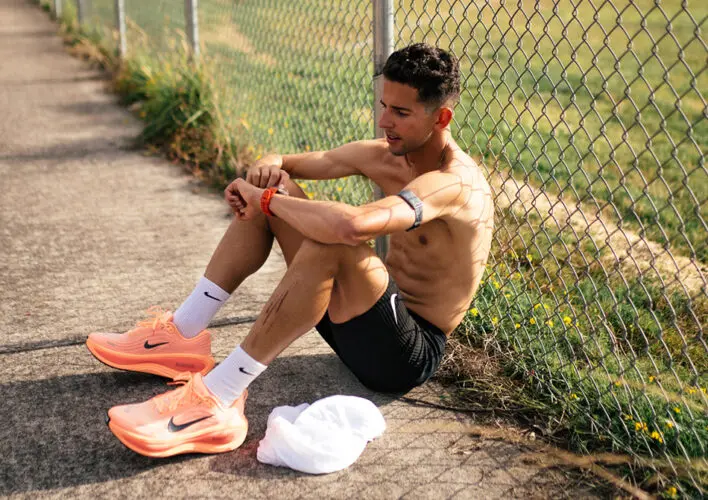
“Most companies don't iterate through products that quickly to improve. They might release a new watch or a new product in general once a year, every other year, but there seems to be a a really strong desire to improve there, which I like. The things that I'm suggesting, they're implementing really quickly.”
Amazfit worked with world marathon record-holder Kelvin Kiptum until his untimely death in 2024. Since then their stable of athletes has grown to include recent Ultra-Trail du Mont-Blanc winner Ruth Croft, Olympic 200m gold medallist Gabby Thomas and European 10,000m champion Yeman Crippa, among others.
Ambitious athletes and coaches will be familiar with runners pricking their fingers during workouts to take lactate readings in order to train at the optimum pace.
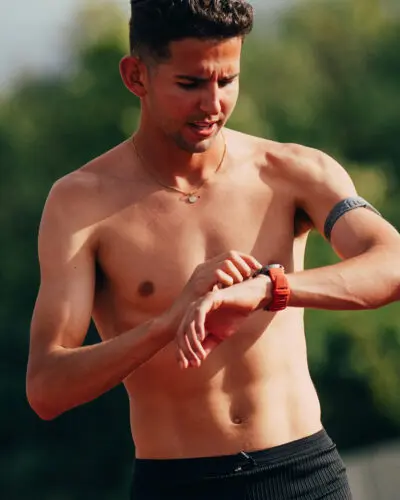
Fisher is among the modern athletes who do this and admits: “I don't like pricking my finger but the data you get is very useful.”
However, Fisher says right now those kind of numbers are slightly “piecemeal” in that the lactate is taken every two or three reps. “This means you don’t really know what happens in between,” he explains, “so to have a continuous data stream is pretty helpful.”
At present, smart wearables aren’t able to measure lactate blood levels but Fisher believes it might be possible one day. He draws similarities, for example, with the continuous glucose monitors that offer 24/7 readings via a small device that usually sits on the upper arm and which has a thin wire that goes under the skin.
“There's hope, I think,” he says, on the likelihood of inventing a wearable that can measure blood lactate. “It would be possible somehow. But it would have to be somehow invasive. The technology is there for glucose in your arm, but to get lactate it's just not quite there yet.”
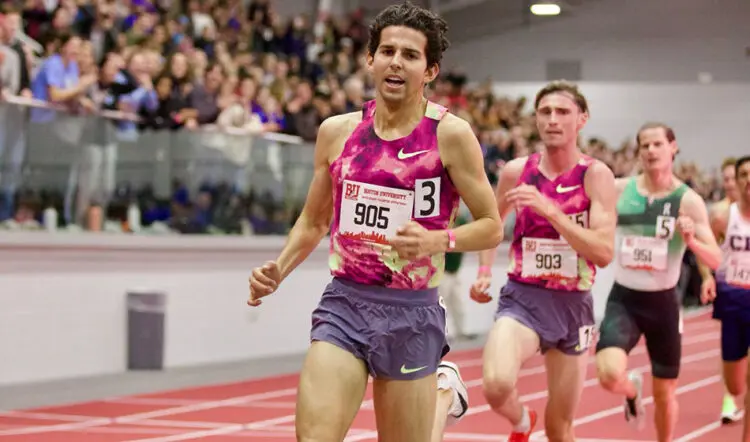
So what stats does Fisher use to measure his training and recovery? “It's a combination,” he says. “If I’m doing a really specific workout where I'm trying to hit a very targeted effort or I'm trying to get a certain response out of my body, then the lactate is really precise.
“Heart rate becomes really helpful because you can pair those numbers together and use them in unison. One metric alone sometimes is a little misleading or a little variable based on the day. But if you use both, you can kind of fine-tune your effort and really know what's going on inside.
“Then if you pair that again with GPS data, you get a really good understanding of how hard you're working. If you're a little tired that day, for instance, you can taper things down. Or if you feel really good that day, you can increase the stimulus a little bit, whether that's making the rep longer, making the rep faster, or taking shorter rests. There are all these different levers you can pull.
“One of those data points is good,” he adds, referring to lactate, heart rate and GPS, “but if you have three of them that kind of line up, you get really good confidence in what you're doing.”
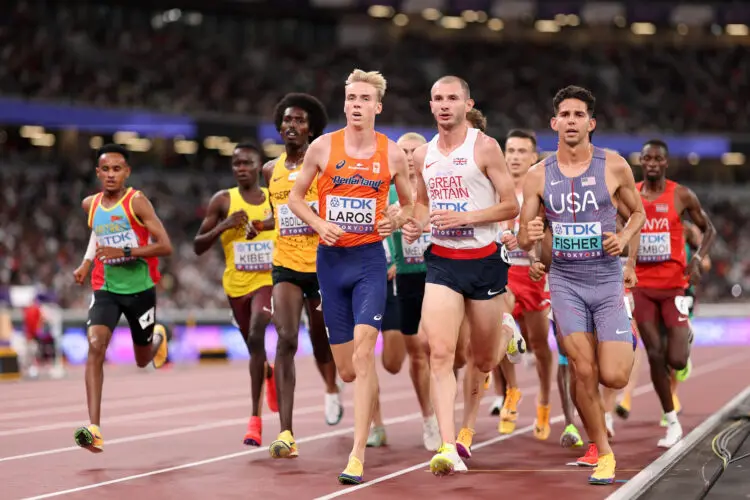
What about when he’s not running? “The 24/7 data has become more important for pro runners and I feel like a lot of my friends that are just casual athletes are more into that stuff now. A big piece of that is sleep tracking.”
Fisher wears the Helio ring during sleep because he’s not a fan of sleeping with a watch. “The ring comes in handy so I can take the watch off and put the ring on and you don't notice it,” he says.
“The ring's a lot less intrusive and it all syncs up. So you take the ring off and you put the watch on, and both of those feed data to the app and so it seamlessly merges it.”
He continues: “When I'm training, it's really useful just to see where you're pushing the limits of your body all the time and that you're pushing yourself to the point of adaptation without breaking yourself down to an injury. So you can figure out where that line is. Sometimes the data can give you an idea of when you're just going a little too hard before you kind of realise it or before you get sick.”
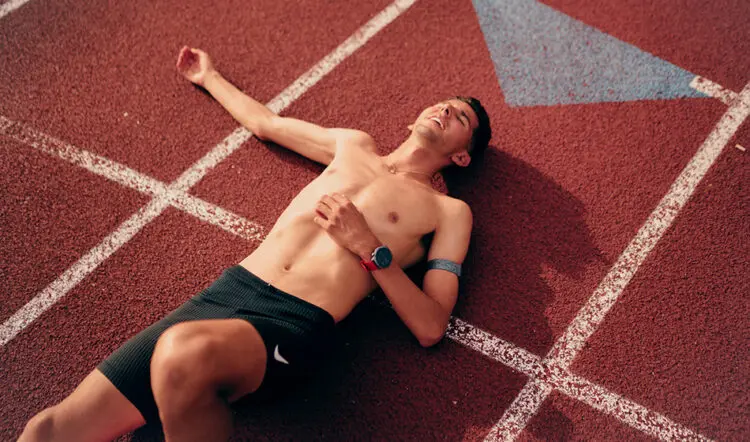
Does Fisher analyse the stats himself much or does he leave it to his coach?
“I look at them quite a bit and my coach does as well,” he says. “Ultimately it's my body, so I'm the most in tune with how I feel. It's nice to bounce ideas and numbers off people, but there's some days where I'm just really tired.
“As an athlete, your instinct is to always push. So sometimes it's nice to have something holding you back at the right times.”
